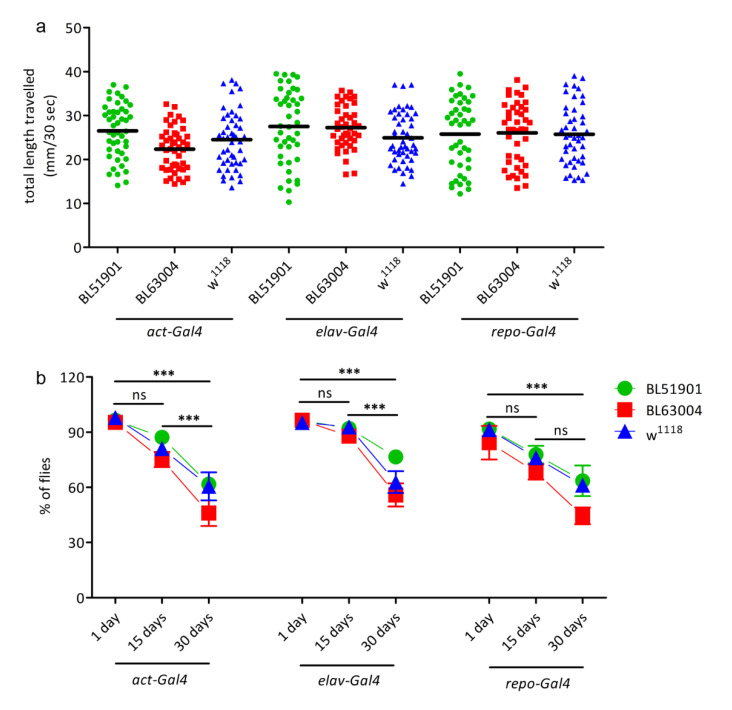Figure 4.
Locomotion behavioural studies. (a) Crawling assay: L3 larvae were transferred in groups of 5 on PBS-agarose plates and video-recorded for 1 min. All videos were then analysed using ImageJ to calculate the total distance travelled (in mm) by each larva in 30 s (n = 50). (b) Climbing assay: negative geotaxis assay to observe motor function decline. Fifteen to twenty adult flies for each genotype were transferred in a 19.5 cm glass tube, gently tapped down to the bottom of the vial and their natural climbing against gravity recorded for 30 s with a camera. The number of flies able to cross a 10 cm line after 20 s was noticed and reported as the percentage against the total number of flies in the tube. The test was repeated 8 times for each group. The assay was repeated at 1, 15, and 30 days after hatching for each group. Significant differences were seen only between different ages, but not in comparison to the w1118 controls. n = 100 for each genotype at each age. Data were measured upon ubiquitous (act-Gal4), pan-neuronal (elav-Gal4), and glial (repo-Gal4) Ids/CG12014 knockdown animals, with 2 different RNAi fly lines (BL51901, BL63004) and w1118 wild type controls. Results are mean ± s.e.m., *** p < 0.001, ns = not significative.

